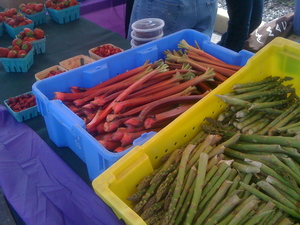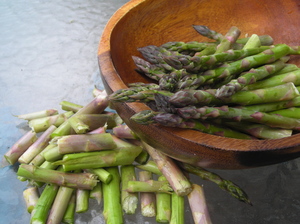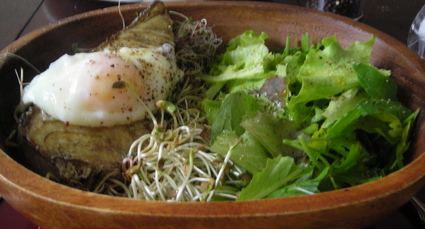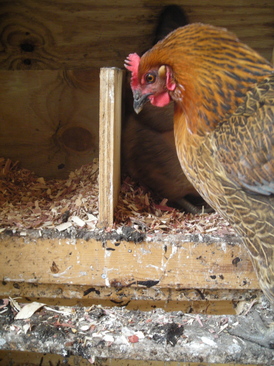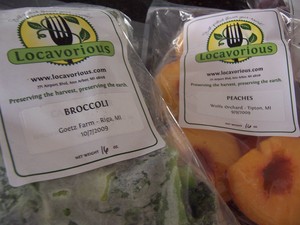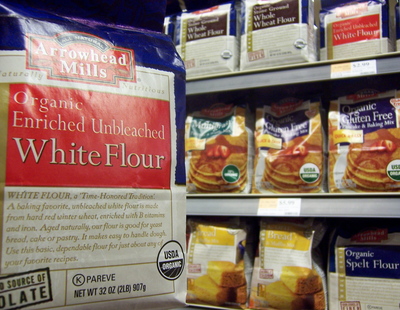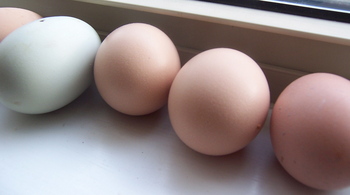Berry jam: a novice's first attempt
/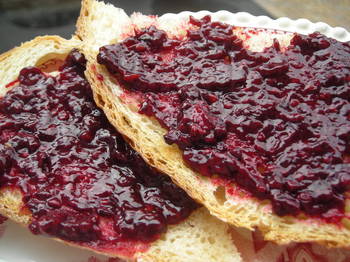
As our household creeps toward food self-sufficiency, you would think our decision to keep backyard chickens would incite more concern than canning fruits and vegetables. However, botulism is a big word and scenes from Louisa May Alcott books where women in full-length wool dresses sweat over a hot stove in the middle of August stirring the gelling fruit are writ large in my psyche.
Last fall we canned tomato sauce for the second year in a row, and we did applesauce as well. I have learned the trick of the popping metal top and the stove was not that hot. So this weekend, inspired by the gorgeous fruit at Makielski's Berry Farm (site of my most recent Farm to Fork visit), I made blackberry jam - and I used their raspberry honey for the sweetener. I learned several important lessons.
#1 - I need a bigger stovetop or I need to make smaller batches.
It was a precariously balanced stovetop with two water sterilizations going for the glass jars, the large black canning pot, and the pot for the cooking of the fruit.
#2 - When the recipe says “Measured Ingredients: 4 cups mashed fruit†- read it twice.
I had measured out fruit, then mashed it, then put in the lemon juice, and then read that it is “mashed.â€
#3 - Don’t wear a white shirt while making blackberry jam.
Indeed.
#4 - The whole house is infused with sweet warm berry goodness - absolutely divine.

I followed the recipe included in the Pomona's Universal Pectin, which I purchased from Downtown Home and Garden. Based on my experience with applesauce last fall - I thought I did not need pectin. But I was kindly corrected by Mark Hodesh, owner of Downtown Home and Garden, who shared that apple and quince are the only two fruits that have high enough pectin to gel - otherwise one must augment. According to Wikipedia, guavas, plums, gooseberries, and oranges can be added to the high pectin list.
I am happy there are more weeks of blackberry, cherry, blueberry, and raspberry picking because I would like to experiment further. I am curious to hear from those of you who have done this before - aside from not wearing a white shirt, are there more things I should watch for as I dabble?
This is the recipe I followed (well, except for the fact that I put in enough lemon for 12 cups and only ended up with 9 cups of mashed fruit). It did gel and it tastes like blackberries.
- Wash and rinse jars; let stand in hot water. Bring lids and rings to boil; turn down heat; let stand in hot water. - Measure mashed berries into pan with lemon or lime juice (4 cups of mashed berries for every ¼ cup of lemon or lime juice). - Add proper amount of calcium water (an addition that Pomona’s includes that helps to activate their pectin, 2 teaspoons). - Measure 1/3 cup honey and mix in 2 teaspoons of pectin. - Bring fruit to a boil. Add pectin-honey; stir vigorously 1-2 minutes while cooking to dissolve pectin. Return to boil and remove from heat. - Fill jars to ¼ inch of top. Boil 10 minutes. Check seals - lids should be sucked down. Lasts about 3 weeks once opened.
Here is the link to the article.

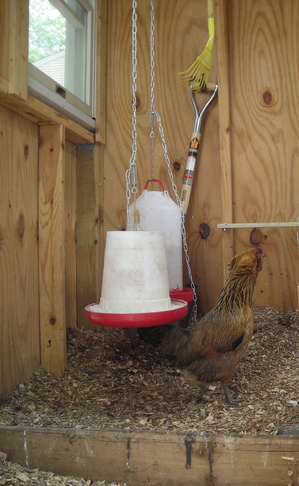
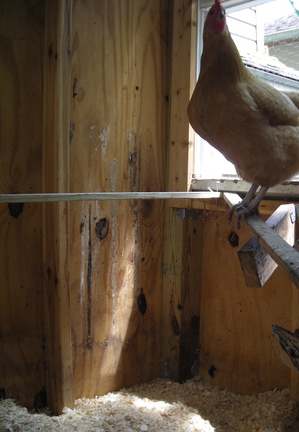
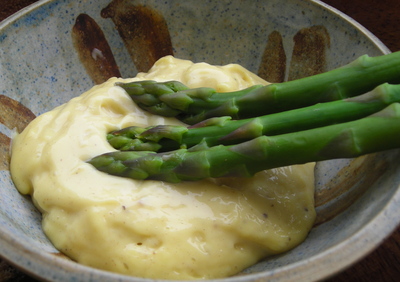 Asparagus dipped in homemade mayonnaise made from the eggs of our backyard chickens - I cannot think of a better way to celebrate the beginning of harvest bounty beginning to descend upon us.
Asparagus is wonderful for all sorts of reasons: it tastes amazing, when it leafs out the fronds are soft and silky like baby hair, and when you prepare it there is snapping involved. I did not realize until I was in college that not everyone snaps asparagus. I was taught to bend the cut stalk until it snaps - the area where it snaps will be the demarcation of where it is still chewable and where it will become stringy and difficult to eat.
Asparagus dipped in homemade mayonnaise made from the eggs of our backyard chickens - I cannot think of a better way to celebrate the beginning of harvest bounty beginning to descend upon us.
Asparagus is wonderful for all sorts of reasons: it tastes amazing, when it leafs out the fronds are soft and silky like baby hair, and when you prepare it there is snapping involved. I did not realize until I was in college that not everyone snaps asparagus. I was taught to bend the cut stalk until it snaps - the area where it snaps will be the demarcation of where it is still chewable and where it will become stringy and difficult to eat.